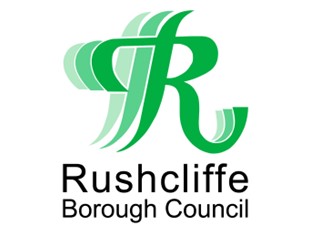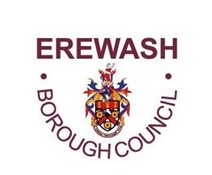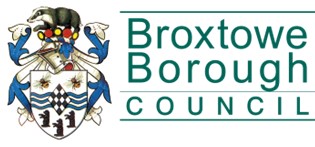A £2.7 billion transport plan to guarantee fast, frequent connections to the HS2 East Midlands Hub station at Toton has been published, promising to spearhead the region’s economic renewal post-COVID-19 and accelerate the benefits of HS2.
The plan – published by a group of councils, transport bodies, and East Midlands Airport – includes new and improved rail, bus, and tram networks plus enhanced road infrastructure.
Under the proposals over 20 villages, towns, and cities across the East Midlands will have direct access to the HS2 station, including Leicester, Nottingham, Derby, Newark, Matlock, Mansfield and Long Eaton.
The vision is split into three phases, with the first earmarked for completion by 2030, to stimulate development before HS2 trains first arrive in the East Midlands.
These improvements are fully integrated with the work of the East Midlands Development Corporation, which has government backing to deliver 84,000 highly-skilled jobs and 4,500 homes at key growth sites close to the HS2 station at Toton, including East Midlands Airport, Chetwynd Barracks, and Ratcliffe-on-Soar Power Station.
Toton Hub Station
The East Midlands currently has the lowest transport spend per head of anywhere in the UK (£245), 49 per cent below UK average (£483) and less than a quarter of that allocated in London (£1019).
If the East Midlands was funded in line with the UK average, it would receive £1billion extra to spend on transport each year.
Under this plan, the region will begin to see the creation of high-value jobs and housing before high-speed trains reach Toton, improving transport connectivity and social mobility for some of the region’s most deprived communities.
Phase One of the scheme, which could be implemented and operational within the next ten years includes plans for:
- An extension of the Nottingham Tram system from Long Eaton to Toton Lane via two new stops at the planned Innovation Campus Development and HS2 East Midlands Hub
- New bus services from the HS2 East Midlands Hub to Amber Valley, West Bridgford, and Clifton;
- Four rail services per hour to the HS2 East Midlands Hub from Leicester, Derby, and Nottingham;
- Enhanced road access to the HS2 East Midlands Hub via improvements to the A6005; and
- New rail services between Mansfield, Derby and Leicester, with stops at Ilkeston, Langley Mill, Kirkby in Ashfield, Sutton Parkway and the HS2 East Midlands Hub, made possible by reopening the Maid Marian line to passenger services.
Phase Two of the scheme, which could be up and running within 20 years, includes a new railway station at East Midlands Airport and connections from the East Midlands Hub to Derby by tram or Bus Rapid Transit.
The new station at East Midlands Airport would allow a direct journey to Leicester in 15 minutes, to Derby in 18 minutes, and to Nottingham in 26 minutes, vastly improving sustainable transport access for passengers and staff.
The final raft of improvements in Phase Three, which would be completed within 25 years, include new rail links to the South Derby Growth Zone and Rolls Royce site, as well as a tram-train serving Long Eaton, a planned housing development to the west of East Midlands Airport, Ratcliffe-on-Soar-Power Station, and the East Midlands Gateway logistics site.
Elizabeth Fagan, chair of the D2N2 said: “This is not just a transport plan; it’s a blueprint for social mobility, prosperity and long-term economic growth. Having the right infrastructure in place will be a catalyst for regeneration, job creation and homebuilding.”
“Now is the time for us all to work together to secure investment and the commitment to make the most of the high-speed rail network to ensure we deliver a successful future post-COVID-19.”
HS2 East Midlands Hub Project
Sir John Peace, chairman of Midlands Connect and Midlands Engine said: “The arrival of HS2 is a watershed moment for our region, and an opportunity that we must grasp with both hands. As we work towards an economic renewal post-COVID-19, the East Midlands must step forward and work together to secure the transport network, economic future and social mobility it deserves.”
“This truly integrated transport strategy isn’t just about connecting more people to the HS2 station; it will also support the building of new homes, accelerate transformational regeneration, and link some of our most deprived communities to nationally-important assets across the East Midlands.
“It means spreading the benefits of high-speed rail to businesses and workers across the region, from our great cities of Derby, Leicester and Nottingham, to bustling towns like Mansfield and Loughborough and smaller communities that may otherwise feel HS2 won’t benefit them. Our message to Westminster is clear; support us in making this vision a reality.”
A Business Case for the Access to the HS2 East Midlands Hub project was funded by local partners and submitted to the Department for Transport in spring 2020. The findings will be submitted as evidence to the National Infrastructure Commission’s Rail Needs Assessment, which will inform the government’s High-Speed North Integrated Rail Plan to maximise the benefits of HS2 Phase 2b.
The partnership is now seeking an initial £4.5million in funding from Government to allow Phase One of this scheme to be brought forward to the next stage of development, including the production of more detailed project designs, engineering solutions and costings.





























